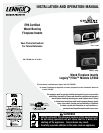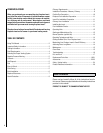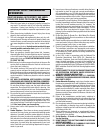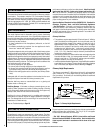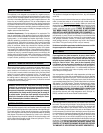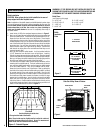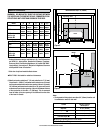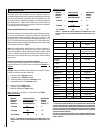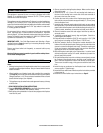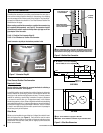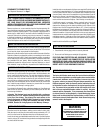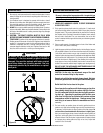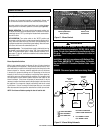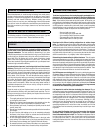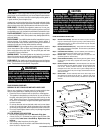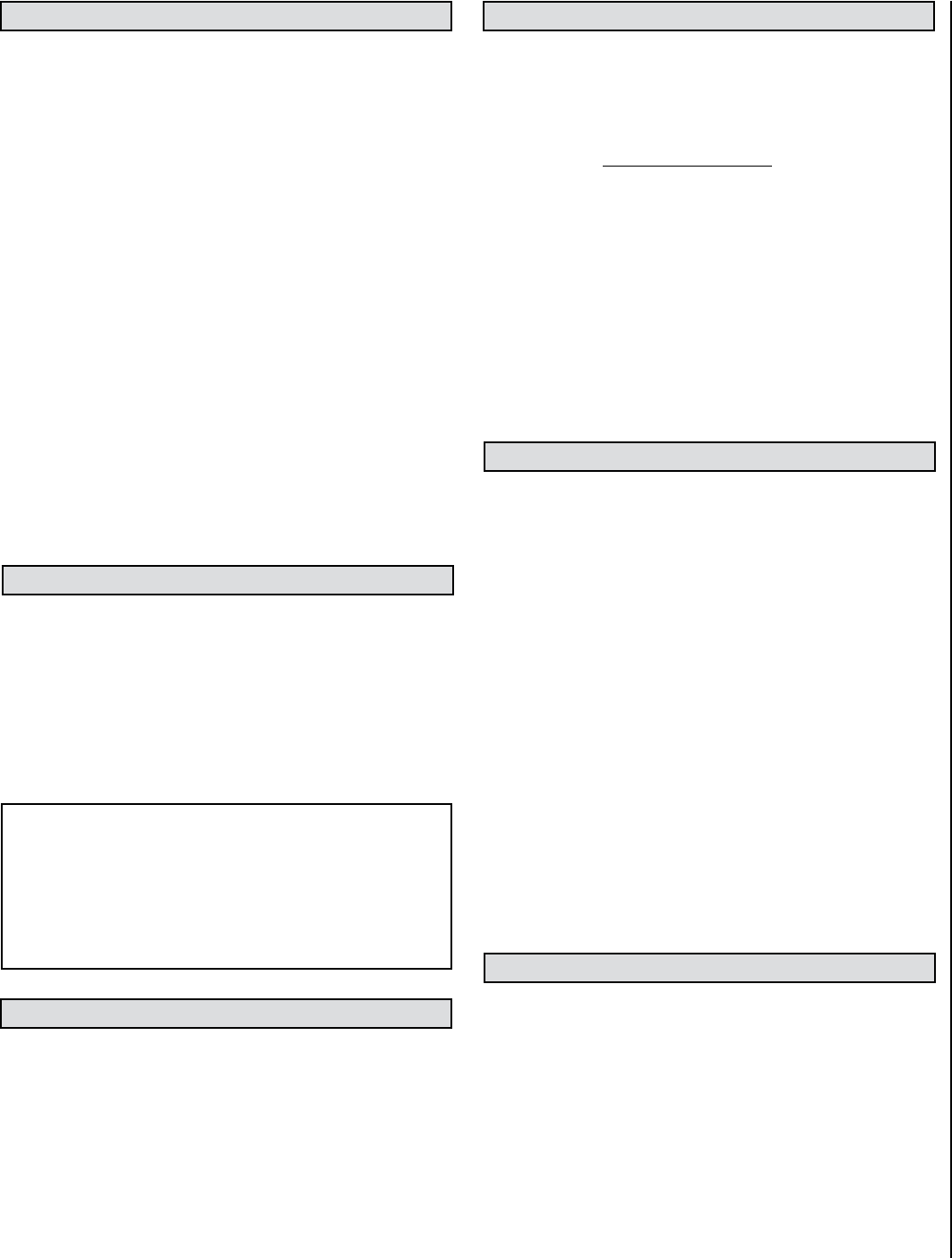
5
This appliance is designed and engineered to burn, dry, well-seasoned
wood only.
Dry, seasoned wood is that which has been cut, split and allowed to dry
under a covered area where air is free to flow and circulate under and
around the wood (not under a tarp or plastic). Make sure wood is not
stacked directly on the ground, it may absorb moisture from the ground.
It should be allowed to dry in these conditions for a minimum of six
months, preferably one year or more.
IT MUST BE UNDERSTOOD
THAT WOOD CANNOT BE LEFT IN ANY KIND OF WET OR DAMP
AREA OR IT WILL NEVER BECOME COMPLETELY SEASONED
. Your
fireplace insert will not operate at the level that it is meant to unless you
use seasoned, dry wood. Do not burn driftwood or wood that has been
in salt water, doing so will void your warranty. Do not burn treated wood,
coal, garbage, cardboard, solvents, or colored paper. Burning treated
wood, garbage, solvents, or colored paper may result in the release of
toxic fumes. This type of burning will also void your warranty.
Do Not store fuel within space heater installation clearances or within
the space required for refueling and ash removal.
This appliance is not designed to be operated in a negative pressure.
In very airtight homes with large kitchen exhaust fans, furnace cold air
returns, fresh air exchange systems and any other air system in close
proximity to the heating appliance may create a negative pressure in the
same room as the heating appliance. This can create dangerous back
drafting of the fireplace insert and chimney joints, drawing combustion
by-products into the home. Be sure your home has adequate makeup air
to eliminate negative pressures caused by the above-mentioned sources.
Lennox Hearth Products accepts no liability for damages resulting from
negative pressures described above.
Ventilation Requirements - Provide adequate air for combustion. The
fresh air requirements of this appliance must be met within the space
where it will be installed. Ventilation is essential when using a Solid-Fuel-
Burning heater. In well insulated and weather tight homes, it may be
difficult to establish a good draft up the chimney (caused by a shortage
of air in the home). The lack of air is caused by many common household
appliances which exhaust air from the home (such as a furnace, heat
pump, air conditioner, clothes dryer, exhaust fans, fireplaces, and other
fuel burning appliances). Also, the combustion process of this heater
uses oxygen from inside the dwelling. If the available fresh air delivery
in the dwelling is insufficient to support the demands of these appliances,
problems can result (i.e. excessive negative pressure can develop in the
dwelling which will affect the rate at which this appliance can draft thus
resulting in performance problems. To correct this problem it may help
to open a window (preferably on the windward side of the house).
NEGATIVE PRESSURE WARNING
When wood is burned slowly, it produces tar and other organic vapors,
which combine with expelled moisture to form creosote. The creosote
vapors condense in the relatively cool chimney flue of a slow-burning
fire. As a result, creosote residue accumulates on the flue lining. When
ignited, this creosote makes an extremely hot fire. The chimney and
chimney connector should be inspected at least once monthly during
the heating season to determine if a creosote buildup has occurred. If
creosote has accumulated (1/8” [3mm] or more), it should be removed
to reduce the risk of a chimney fire.
Ashes should be scooped out of a cool fireplace insert with a small metal
shovel. Ashes should be placed in a metal container with a tight fitting lid.
The closed container of ashes should be placed on a non-combustible
floor or on the ground, well away from all combustible materials, pending
final disposal. If the ashes are disposed of by burial in soil or otherwise
locally dispersed, they should be retained in the closed container until
all the cinders have thoroughly cooled. Ashes can ignite up to 72 hours
after removal from the fireplace insert.
CREOSOTE, FORMATION AND NEED FOR REMOVAL
DISPOSAL OF ASHES
FUEL
Please be patient with the heat output of your fireplace insert for the first
few weeks. The steel will go through a curing process that eliminates
moisture, which is deep in the steel and firebrick. This moisture will
reduce initial heat output of your fireplace insert and may make it dif-
ficult to start. After you have broken in the paint on the fireplace insert
it will be necessary to build hot fires to thoroughly remove the moisture
from the appliance. Running the fireplace insert with the draft fully open
for 1 to 1-1/2 hours after starting and adding generous amounts of fuel
during the first week or two should complete the curing process. We
recommend the use of a thermometer attached to the fireplace insert top
or chimney. Temperatures on the connector pipe should run in the 250-
600 degree range.
(DO NOT OVERFIRE THE INSERT DURING THIS
PROCESS. IF THE INSERT OR CHIMNEY BECOMES RED, REDUCE
THE AMOUNT OF AIR ENTERING THE INSERT IMMEDIATELY).
If your appliance has plated accessories, be sure to clean it with a
household type glass cleaner and a very soft cloth to remove any
fingerprints and residues prior to the first fire and before any fire if
the gold has been handled or soiled. Do not close the door tightly
during the “Burn-In Period.” Also, open the door frequently (every
5-10 minutes) to keep the gasket from adhering to the curing paint.
Ventilate the house well during these first firings as the paint gives off
carbon dioxide and unpleasant odors. It is recommended that persons
sensitive to an imbalance in the indoor air quality avoid the fireplace
insert during the curing process.
Your new appliance is painted with a high temperature paint that cures
during the first few firings. We recommend that you put your fireplace
insert through a regimen of three burns. The first two should last for 20
minutes each at 250 degrees (the fireplace insert should be allowed to
cool completely between each burn). The third should be a burn of at least
450 degrees F. for 45-60 minutes. The paint will become soft, gummy
and emit non-toxic smoke during these burns. After the fireplace insert
cools down for the third time, the paint will harden. DO NOT BUILD A
LARGE ROARING FIRE UNTIL THIS CURING EFFECT IS COMPLETE OR
YOU MAY DAMAGE THE FINISH OF YOUR INSERT. Spray can touch-
ups should be done only with a high temperature stove paint (cat. no.
H8159), available from all Lennox Hearth Products dealers.
BURN-IN PERIOD
PAINT CURING
Establish a routine for the fuel, wood burner and firing technique.
Check daily for creosote build-up until experience shows how often
you need to clean to be safe. Be aware that the hotter the fire the
less creosote is deposited, and weekly cleaning may be necessary
in mild weather even though monthly cleaning may be enough in
the coldest months. Contact your local municipal or provincial fire
authority for information on how to handle a chimney fire. Have a
clearly understood plan to handle a chimney fire.



